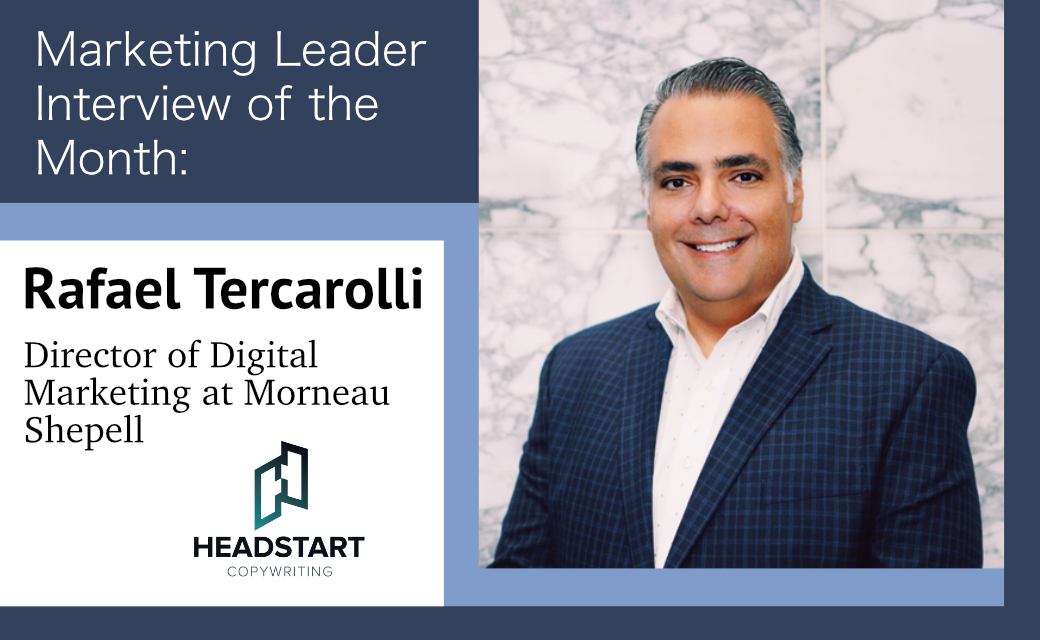
As Content Marketing Director at PFL, I lead our content, creative, and brand strategies. In my ten years of multichannel marketing experience, I have worked on projects ranging from organizing a Wyoming Circuit Finals rodeo to building a new SaaS category, tactile marketing automation. I’m a soft-spoken girl who loves to sing karaoke and WWE wrestle my two toddler sons.
1. Why are you an advocate for the marketing mix and/or account-based marketing?
There’s so much noise out there, and, there’s a lot of competition for getting someone’s attention. I think that’s where an account-based, multi-channel approach helps you zero in on the most important accounts for your business. Account-based marketing helps remove the noise and multi-channel marketing helps infiltrate the accounts and target the personas in those accounts.
It’s easy to delete emails, and that’s why multi-channel marketing is so important. You’re combining emails with digital ads, interactive video, and more conversational-type marketing on social. And one of my favorite components is direct mail. My company PFL is changing the way people think about and use direct mail, making it more timely and relevant for the target prospects they’re going after.
As a marketer, I enjoy using data to inform my content, my message and the timing, and how I work my channels together to go after a target. That target might receive a direct mail package that is personalized based on their recent web browsing history on our site, and just as the direct mail lands, there’s a follow-up email, and then a follow-up phone call. When they go online to check out the company that’s contacting them, they start seeing ads. It all comes together in a very orchestrated way. And then you’ve got their attention.
We’ve heard from customers that when a company prospecting them gives them this VIP treatment, it’s a signal that this is a company they want to work with. Direct mail gets you 100 percent of your prospect’s attention at the time when they’re holding the mailer in their hands. It’s important to maximize that attention, and to use the data and what you know about them to provide value, something that’s relevant to them.
2. How does creativity and innovation intersect with data?
My role as a creative director balances the science and the art of marketing, but I think it leans towards the science. The more data you can use to inform your message and your content, the more relevant and helpful it’s going to be to the people receiving them. People don’t care that you sent them something if it doesn’t speak to their needs, their pain points and their interest. But if it looks good and it’s creative, it becomes even more impactful. We’re constantly trying to find better ways to use data to inform the message we’re delivering.
When we get a task to create some content, we start by asking who the audience is, what they care about, what their most recent actions with us are, and what stage in the buying cycle they’re in. Once we have that data, then we open it up to creative brainstorming. Are they more receptive to humor? What are their pain points? The goal is to create a campaign that the audience can relate to and that they can have some fun with. As an example, for a direct mail piece, we might create some memes about pain points, print them on cards, and send them with a tiny easel that they can use to display the memes on their desk, maybe share them with friends who can relate to the pain points. It starts with the data, then there’s creativity, and then it circles back to data, to see if it’s working, if it helps us hit our KPIs, and how we can modify it for next time.
3. What challenges and opportunities do you have, running a small team at a high-growth company?
As a small team, some days it can feel like the challenges take over, but there are always opportunities to tackle those challenges. We have a lot of requests, so we work like an internal creative agency. We support our demand gen teams, our sales enablement teams, and our customer success teams. We make sure that our brand stays consistent, and that we’re providing the best assets we can for each campaign. We’re also trying to balance how our own strategic plan drives leads and gets the most ROI from the content we’re creating.
It’s not always easy. And because the inbound content marketing side is a longer-term play, what you’re doing now isn’t necessarily going to get you immediate results, but it will help you see more traffic down the road, more leads coming in, and more conversions. But if you’re only doing the short-term hits to please the teams you’re working with, you’ll regret it in the end. So that’s the balancing act: helping the internal teams hit their goals by providing the assets they need to build their campaigns, and keeping the focus on your longer-term content marketing strategies. And at the same time, of course, you’ve got to ensure that your brand is being represented in all the right ways across all areas of the business.
A big lesson learned that I would share with other small, scrappy teams is that there needs to be alignment across the business with what the goals are, clear communication with what you’re working on and why, and making sure that wherever you can, you’ve got some benchmark data to drive forecasts on what you expect to get out of what you’re putting your effort into.
4. What is your MarTech stack?
We’re a smaller team, but we have a nice martech stack, and I think that’s been critical to our high growth in a short amount of time. Salesforce is our core: everyone in marketing, sales and customer success uses it. Our marketing animation platform is Marketo, which plugs right into Salesforce. That’s where we build our programs and campaigns, and where we funnel people into the campaigns that we’ve built based on our Salesforce data.
Our BDRs doing the frontline sales use Outreach.io. We build sequences for them, a series of touchpoints in order, so that they can plug prospects into different sequences and then do the tasks in that sequence. And two of our most important tools are our own solutions, Tactile Marketing Automation and SwagIQ. That’s where we add the direct mail, personalized package element into our multichannel marketing. Tactile Marketing Automation lets the marketing team build direct mail touchpoints into our nurture stream, and SwagIQ lets the BDRs select an item to send to a prospect, customize a note, then click a button to send it. Once they get the delivery notification, they can follow up with a call.
Those are our big core pieces. We also have Terminus for targeted ads, and we use Gong.io to mine for content ideas, to hear how prospects and customers are talking about their problems and their needs. That gives me ideas about their pain points, and how to address them with content, so we can help them better.
There are a lot of tools. I think as a marketer you need to make sure you’ve got the internal resources to use them effectively and get ROI from them. The worst thing is to pay $20K for a yearly subscription for something that is barely used. We’ve been careful about that and we’re tight with our budgeting. We use most of these daily, and most of them span the company.
















